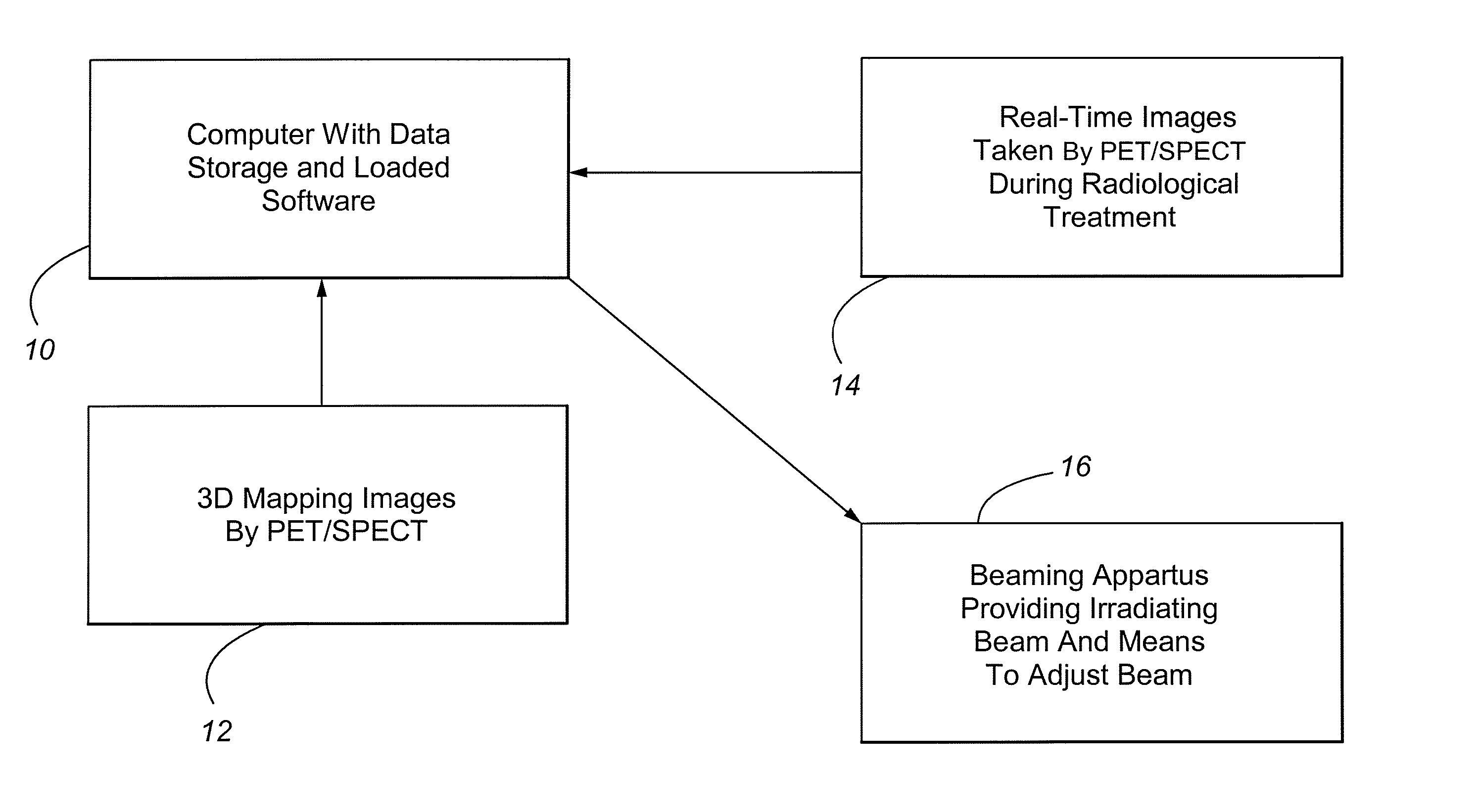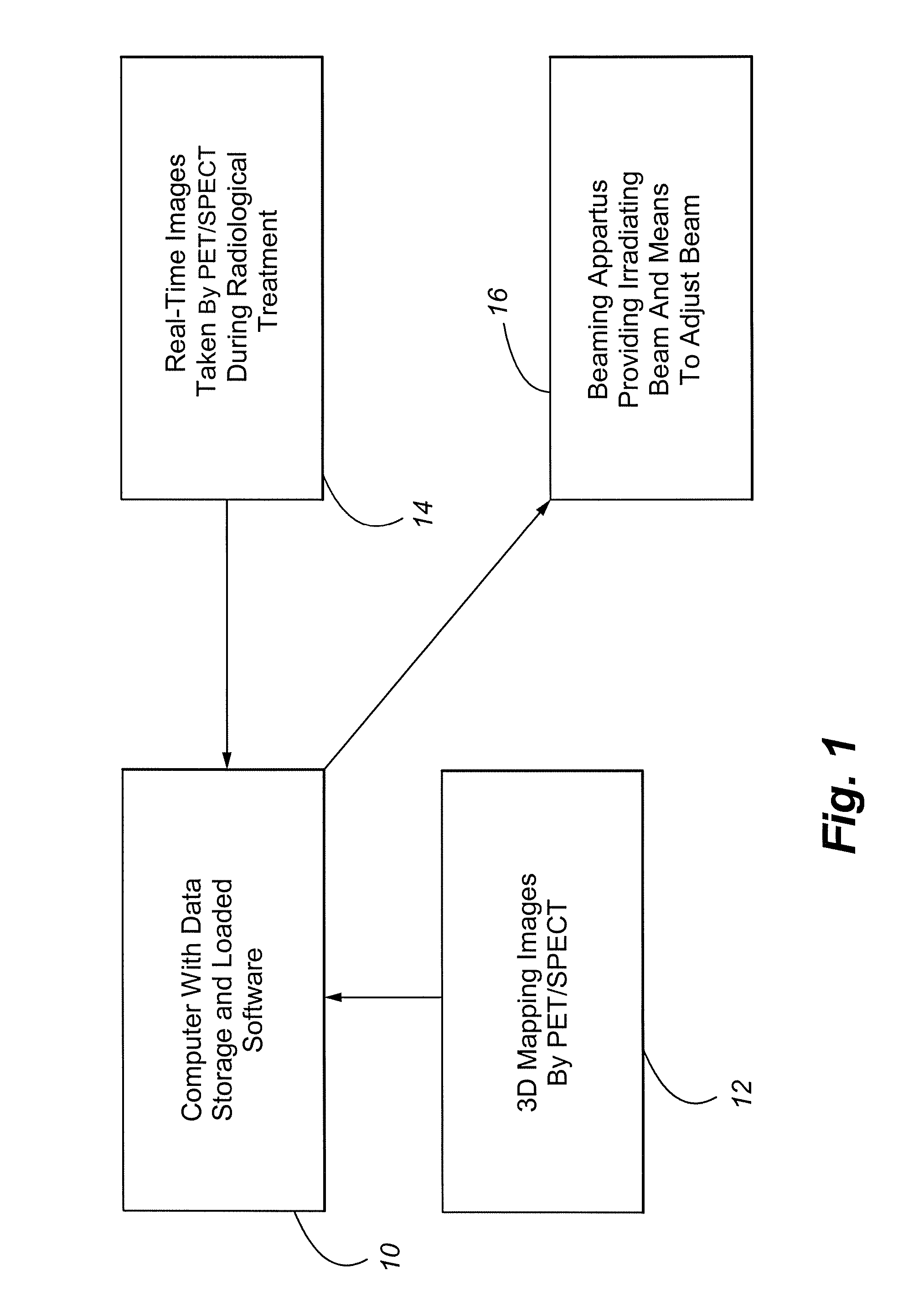Method and Apparatus Including Use of Metalloporphyrins for Subsequent Optimization of Radiosurgery and Radiotherapy
a radiotherapy and metalloporphyrin technology, applied in the field of cancer screening and cancer treatment, can solve the problems of inability to repeat interventional procedures to treat neoplastic tissue, and inability to effectively treat many types of diseased tissue, so as to reduce the size of tumors, enhance the ability to provide radiosurgical beams, and eliminate the exposure of healthy tissue
- Summary
- Abstract
- Description
- Claims
- Application Information
AI Technical Summary
Benefits of technology
Problems solved by technology
Method used
Image
Examples
Embodiment Construction
[0029] In order to execute the method and apparatus of the present invention, a system is provided for delivering a collimated ionizing beam of radiation to a targeted area of tissue. Examples of such systems to support the present invention are disclosed in the U.S. Pat. Nos. 5,427,097 and 5,207,223.
[0030] Referring to FIG. 1, a representative system to achieve the present invention includes a computer 10 with data storage capability that is capable of executing instructions from software loaded within the computer. The computer can store and manipulate 3-dimensional mapping data images 12 of a patient being treated. The 3-dimensional mapping is typically stored in digital form, and is loaded in the computer 10 for later comparison purposes. As mentioned above, the 3-dimensional mapping is preferably achieved by SPECT or PET scanning following administration of a metaloporphyrin to a patient. A beaming apparatus 16 is provided which, when activated, emits a collimated surgical ion...
PUM
| Property | Measurement | Unit |
|---|---|---|
| wave lengths | aaaaa | aaaaa |
| half life | aaaaa | aaaaa |
| half life | aaaaa | aaaaa |
Abstract
Description
Claims
Application Information
 Login to View More
Login to View More - R&D
- Intellectual Property
- Life Sciences
- Materials
- Tech Scout
- Unparalleled Data Quality
- Higher Quality Content
- 60% Fewer Hallucinations
Browse by: Latest US Patents, China's latest patents, Technical Efficacy Thesaurus, Application Domain, Technology Topic, Popular Technical Reports.
© 2025 PatSnap. All rights reserved.Legal|Privacy policy|Modern Slavery Act Transparency Statement|Sitemap|About US| Contact US: help@patsnap.com


